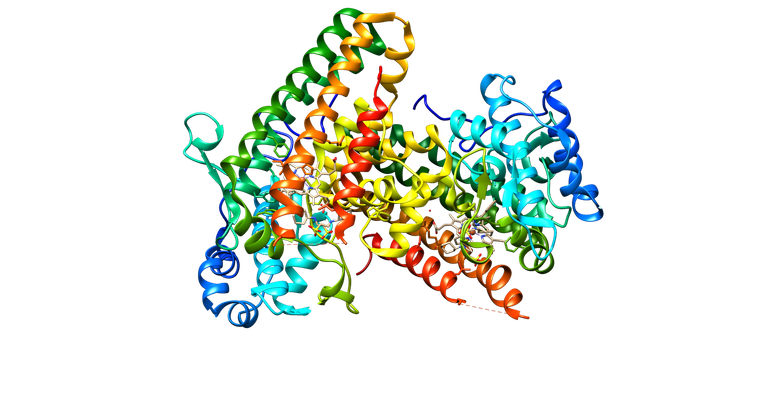Targeting key agents that help the body regulate metabolism could reverse disease progression, including Alzheimer’s-related cognitive decline
Aging is a biological process that no one can avoid. Ideally, aging should be a time to relax and enjoy the fruits of your labor. However, aging also has a dark side, often associated with disease.
Every second, your cells perform billions of biochemical reactions that fuel essential life functions, forming a highly interconnected metabolic network. This network allows cells to grow, proliferate, and repair themselves, and its disruption can contribute to the aging process.
But does aging cause metabolic decline, or does metabolic breakdown accelerate aging? Or both?
To answer this question, we must first understand how metabolic processes are disrupted during aging and disease. I am a scientist and researcher, and my lab focuses on exploring the complex relationship between metabolism, stress, and aging. Ultimately, we hope this work will provide strategies to promote healthier aging and more vibrant lives.
Relationship between metabolism and aging
Aging is the most significant risk factor for many of society’s most common diseases, including diabetes, cancer, cardiovascular disease, and neurodegenerative disorders. A key factor behind the onset of these health problems is a disruption of homeostasis, or cellular and metabolic balance. Disruption of homeostasis destabilizes the body’s internal environment, leading to imbalances that can trigger a cascade of health problems, including metabolic disorders, chronic diseases, and impaired cellular function that contribute to aging and other serious conditions.
Disturbed metabolism is linked to many characteristics of aging cells, such as telomere shortening, which is damage to the protective ends of chromosomes, and genomic instability, the tendency to form genetic mutations.
Metabolism can be divided into two major processes: anabolism, or the building of molecules, and catabolism, or the breaking down of molecules.
Dysfunctional metabolism is also linked to malfunctioning mitochondria; cellular senescence, when cells stop dividing; imbalances in gut microbes, our microbiome; and the reduced ability of cells to sense and respond to various nutrients.
Neurological disorders such as Alzheimer’s disease are prime examples of age-related conditions with a strong link between dysregulated metabolism and functional decline. For example, my research group previously found that in aging mice, the ability of bone marrow cells to produce, store, and utilize energy is reduced due to increased activity of a protein that modulates inflammation. This energy-starved state leads to increased inflammation that is exacerbated by the reliance of these aging cells on glucose as their primary fuel source.
However, experimental inhibition of this protein in bone marrow cells from old mice revitalizes the cells’ ability to produce energy, reduces inflammation, and improves plasticity in a brain region involved in memory. This finding suggests that some cognitive aging could be reversed by reprogramming the glucose metabolism of bone marrow cells to restore immune function.
Reusing medicines
In our newly published research, my team and I discovered a new connection between disrupted glucose metabolism and neurodegenerative diseases. This led us to identify a drug originally developed for cancer that could be used to treat Alzheimer’s.
We focused on an enzyme called IDO1 that plays a key role in the first step in breaking down the amino acid tryptophan. This pathway produces an essential compound called kynurenine, which fuels additional energy pathways and inflammatory responses. However, too much kynurenine can have harmful effects, including increasing the risk of developing Alzheimer’s.

The IDO1 enzyme is a key part of brain cell metabolism.
Goultard59/Wikimedia Commons, CC BY-SA
We found that inhibiting IDO1 can restore memory and brain function in a variety of preclinical models, including cell cultures and mice. To understand why, we looked at brain cell metabolism. The brain is one of the most glucose-dependent tissues in the body. Failure to properly utilize glucose to fuel critical brain processes can lead to metabolic and cognitive decline.
Elevated IDO1 levels reduce glucose metabolism by producing excess kynurenine. Therefore, IDO1 inhibitors, originally designed to treat cancers such as melanoma, leukemia, and breast cancer, could be repurposed to reduce kynurenine and improve brain function.
Using a variety of laboratory models, including mice and cell cultures from Alzheimer’s patients, we also found that IDO1 inhibitors can restore glucose metabolism in brain cells. In addition, we were able to restore glucose metabolism in mice with accumulation of amyloid and tau, abnormal proteins involved in many neurodegenerative disorders, by blocking IDO1. We believe that repurposing these inhibitors could be useful in several neurodegenerative disorders.
Healthier cognitive aging
The effects of neurological disorders and metabolic decline place severe strains on individuals, families, and economies.
While many scientists have focused on attacking the downstream effects of these diseases, such as controlling symptoms and slowing progression, early treatment of these diseases can improve cognitive abilities as we age. Our findings suggest that targeting metabolism has the potential to not only slow neurological decline, but also reverse the progression of neurodegenerative diseases such as Alzheimer’s, Parkinson’s, and dementia.
This new understanding of the intersection of stress, metabolism, and aging could pave the way for healthier aging. Further research could improve our understanding of how metabolism influences stress responses and cellular balance throughout life.

Melanie R. McReynolds receives funding from the Howard Hughes Medical Institute Hanna H. Gray Fellows Program Faculty Phase and the Burroughs Welcome Fund PDEP Transition to Faculty.
Source: Terra
Rose James is a Gossipify movie and series reviewer known for her in-depth analysis and unique perspective on the latest releases. With a background in film studies, she provides engaging and informative reviews, and keeps readers up to date with industry trends and emerging talents.






